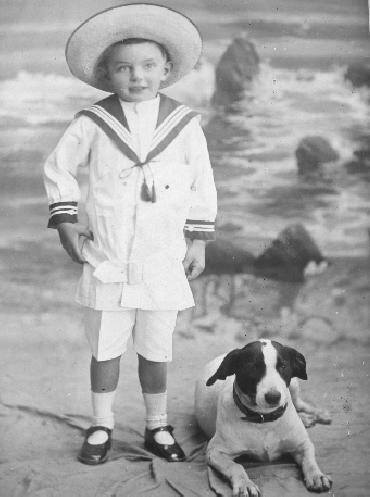
Figure 1.--This American boy's name was Fred. He was 4 Years old when his portrait was taken on August 17, 1914. Most boys wore long stockings, usually black long stockings. Youngr boys might wear short white socks, especally during the summer. |

|
Most children wore long stockings in the early 20th century. Black long stockings were especially common. White long stockings were also won by girlks, but were less common for boys. There were variations. Children in southern Europe were more likely to wear three-quarter socks. Poor children often went barefoot. Short ankle socks appeared in the in the 1920s, but trends varied from country to country. American boys began to wear kneesocks with knickers which becae common in the 1930s, but many younger boys still wore long stockings. Boys began wearing ankle ankle socks in the 1930s. British boys commonly wore knee socks and long stockings were not commonly seen after World War I. Boys in France wore both ankle socks and knee socks on a seasonal basis. Long stockings continued to be worn in Germany, Scandinavia, and Eastern Europe. After World War II the differences in hosiery from country to country began to gradually decline. Most boys have worn ankle socks. Knee socks were worn to some extent in Britain, but mostly for schoolwear. There were some other country differences, but most boys wore ankle socks. Tights appeared in the 1950s and gradually replaced long stockings. Younger boys wore tights in Germany and some northern European countries. American and Japanese boys wore knee-length tube socks during the 1970s and 80s. In the late 1990s some boys began wearing shortened length sport socks.
Most children wore long stockings in the early 20th century. Black long stockings were especially common. White long stockings were also won by girlks, but were less common for boys. Kneesocks became increasing popular after World War I. Short ankle socks appeared in the in the 1920s, but trends varied from country to country. Tights appeared in the 1950s. In the United States they were worn by girls, but in Germany and Eastern Europe boys also wore them. Kneesocks declined in popularity diring the 1950s as ankle socks became increasingly popular. In the late 1990s some boys began wearing shortened length sport socks.
There were substantial variations concerning hosiery from country to country, especially in the early 20th century. Children in northern Europe and North America commonly wore long stockings in the first hslf of the 20th century. Children in southern Europe were more likely to wear three-quarter socks. Even here, however, children might wear long stockings for formal occassions. A good example is an Italian boy doing his First Communion about 1925. Poor children often went barefoot. American boys began to wear kneesocks with knickers which becae common in the 1930s, but many younger boys still wore long stockings. Boys began wearing ankle ankle socks in the 1930s. British boys commonly wore kneesocks and long stockings were not commonly seen after World War I. Boys in France wore both ankle socks and kneesocks on a seasonal basis. Long stockings continued to be worn in Germany, Scandinavia, and Eastern Europe. After World War II the differences in hosiery from country to country began to gradually decline. Most boys have worn ankle socks. Knee socks were worn to some extent in Britain, but mostly for schoolwear. There were some other country differences, but most boys wore ankle socks. Tights appeared in the 1950s and gradually replaced long stockings. Younger boys wore tights in Germany and some northern European countries. American and Japanese boys wore knee-length tube socks during the 1970s and 80s.
Most children wore long stockings in the early 20th century. Black long stockings were especially common. White long stockings were also won by girlks, but were less common for boys. There were variations. Children in southern Europe were more likely to wear three-quartr socks. Poor children often went barefoot. Short ankle socks appeared in the in the 1920s, but trends varied from country to country. American boys began to wear kneesocks with knickers which becae common in the 1930s, but many younger boys still wore long stockings. Boys began wearing ankle ankle socks in the 1930s. British boys commonly wore kneesocks and long stockings were not commonly seen after World War I. Boys in France wore both ankle socks and kneesocks on a seasonal basis. Long stockings continued to be worn in Germany, Scandinavia, and Eastern Europe. After World War II the differences in hosiery from country to country began to gradually decline. Most boys have worn ankle socks. Knee socks were worn to some extent in Britain, but mostly for schoolwear. There were some other country differences, but most boys wore ankle socks. Tights appeared in the 1950s and gradually replaced long stockings. Younger boys wore tights in Germany and some northern European countries. American and Japanese boys wore knee-length tube socks during the 1970s and 80s. In the late 1990s some boys began wearing shortened length sport socks.
Navigate the Historic Boys' Clothing Web Site:
[Return to the Main hosiery chronology page]
[Return to the Main hosiery page]
[Introduction]
[Activities]
[Biographies]
[Chronology]
[Cloth and textiles]
[Clothing styles]
[Countries]
[Topics]
[Bibliographies]
[Contributions]
[FAQs]
[Glossaries]
[Satellite sites]
[Tools]
[Boys' Clothing Home]
Navigate the Historic Boys' Clothing Web chronological pages:
[The 1900s]
[The 1910s]
[The 1920s]
[The 1930s]
[The 1940s]
[The 1950s]
[The 1960s]
[The 1970s]
[The 1980s]
[The 1990s]
Navigate the Historic Boys' Clothing Web style pages:
[Knee pants]
[Knickers]
[Short pants suits]
[Kilts]
[Sailor suits]
[Shoes]
[Ring bearer/page costumes]
[Shortalls]
